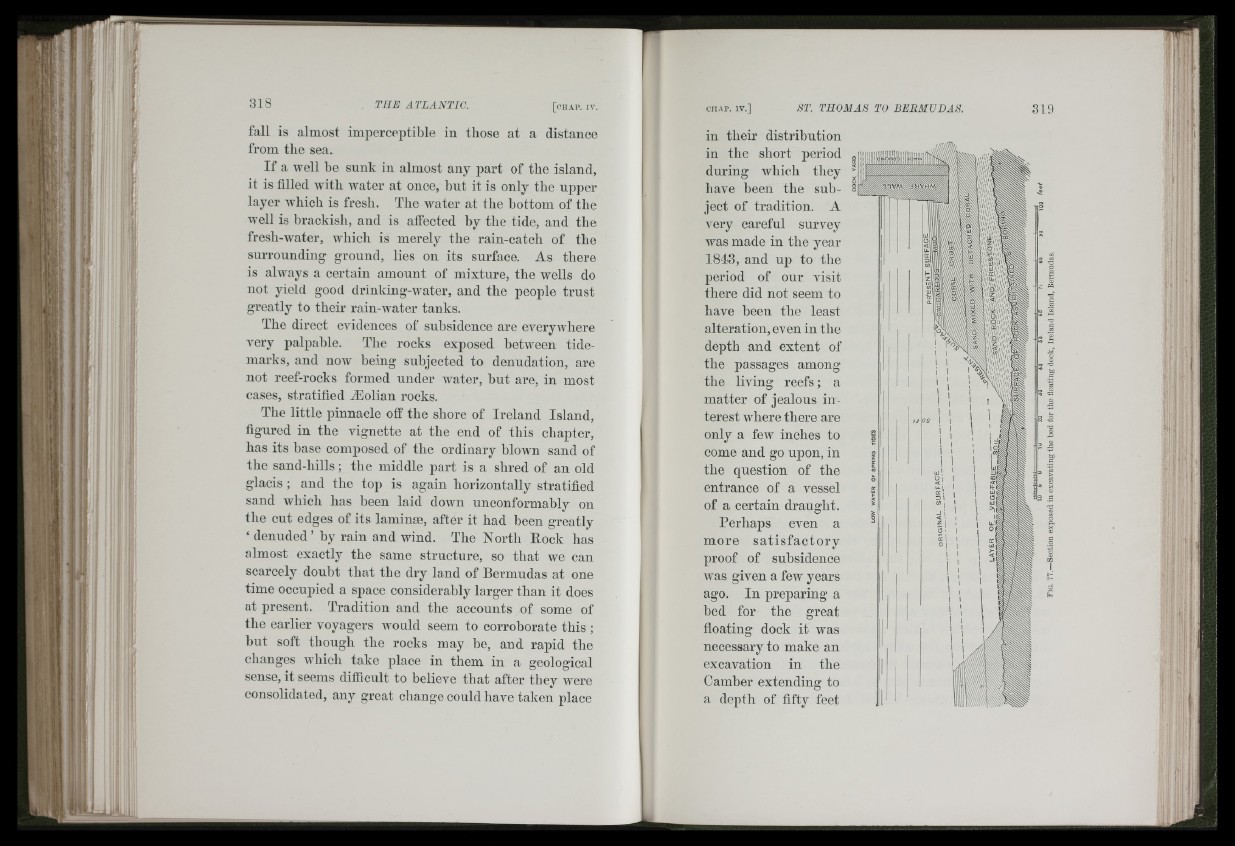
318
I li "''
fall is almost imperceptible in those at a distance
from the sea.
If a well be sunk in almost any part of the island,
it is filled with water at once, hut it is only the upper
layer which is fresh. The water at the bottom of the
well is brackish, and is aifected by the tide, and the
fresh-water, which is merely the rain-catch of the
surrounding ground, lies on its surface. As there
is always a certain amount of mixture, the wells do
not yield good drinking-water, and the people trust
greatly to their rain-water tanks.
The direct evidences of subsidence are everywhere
very palpable. The rocks exposed between tidemarks,
and now being subjected to denudation, are
not reef-rocks formed under water, but are, in most
cases, stratified jEolian rocks.
The little pinnacle off the shore of Ireland Island,
figured in the vignette at the end of this chapter,
has its base composed of the ordinary blown sand of
the sand-hills; the middle part is a shred of an old
glacis ; and the top is again horizontally stratified
sand which has been laid down unconformahly on
the cut edges of its lamina), after it had heen greatly
‘ denuded’ by rain and wind. The North Rock has
almost exactly the same structure, so that we can
scarcely douht that the dry land of Bermudas at one
time occupied a space considerably larger than it does
at present. Tradition and the accounts of some of
the earlier voyagers would seem to corroborate this ;
hut soft though the rocks may he, and rapid the
changes which take place in them in a geological
sense, it seems difficult to believe that after they were
consolidated, any great change could have taken place
in their distribution
md
the short period
uring
which they
have been the subject
of tradition. A
very careful survey
was made in the year
1843, and up to the
period of our visit
there did not seem to
have been the least
alteration, even in the
depth and extent of
the passages among
the living reefs; a
matter of jealous interest
where there are
only a few inches to
come and go upon, in
the question of the
entrance of a vessel
of a certain draught.
Perhaps even a
more sa tisfa c to ry
proof of subsidence
was given a few years
ago. In preparing a
bed for the great
floating dock it was
necessary to make an
excavation in the
Camber extending to
a depth of fifty feet
\
094136